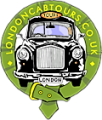The Beatles in London: Part 1 – St John’s Wood (including Abbey Road record cover key facts).
St John’s Wood is a residential, mainly well-to-do, area on the north west edge of central London. It’s fair to say that St John’s Wood is best known for two world famous locations: Lord’s Cricket Ground and Abbey Road Studios (of which more later). Like many parts of London, this area has a history stretching back centuries, so before we stage dive headlong into the mosh pit of rock’n roll let’s explore some of that old London history (also see: The Beatles (and Hendrix and Bowie) in London: Part 2 – Mayfair).
A Brief History of St. John’s Wood, London NW8
The area was rural farmland, beyond London’s built up centres, originally part of the ancient manor of Lileston (‘Lileston’ eventually becomes Lisson [Grove]). Not much is known about Saxon or early medieval ownership but the Domesday Book of 1086 records the land was owned by a woman called Eideva. Ownership somehow passed to the Knights Templar until their suppression in 1322 and from the mid 14th century to the Order of Knights of the Hospital of St John of Jerusalem (Knights Hospitaller). St John’s Wood became its lasting name.
The Reformation in the 16th century, and the accompanying royal seizure of ecclesiastical wealth, initiated a succession of land owners and St John’s Wood remained mainly grassland which was harvested for horses hay. In 1732 the land was purchased by Henry Eyre, a City and wine merchant. The Eyre Estate developed the lower part in the early 1800s, close to the royal estate that was developing as Regents Park, as a working class district known as Portland Town; but all is now demolished. Grandiose plans to develop the estate as a mini-Bath never materialised although some large houses were built along Park Road and Wellington Road (Madame Tussaud lived at No 24).
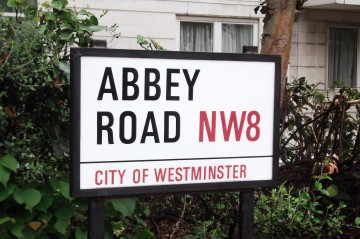
In 1812 Artillery Barracks (later Royal Horse Artillery) were built next to the now long-gone farm and only vacated in 2012 at the end of their lease. In 1814 Thomas Lord moved his cricket ground onto its present site in St John’s Wood Road. He had been moved on from two previous sites in Marylebone to make way for London urbanisation.
Further development from the 1830s created Italianate and Gothic style villas and mansions, which proved very popular and attracted bankers, merchants and the new wealthy. The area also developed a rather rakish reputation as a suburb where a wealthy gentleman might choose to house his mistress – close enough to his West End home, but not too close. Artists, scientists and authors also liked its fresh air and proximity to central London; people like George Eliot, Edwin Landseer, Lawrence Alma-Tadema and Thomas Huxley.
The population grew enough that Marlborough Road Station opened in 1868 but it closed and was replaced by St John’s Wood underground station in 1939. The old ‘ghost’ station is still on the corner of Finchley Road and Queen’s Grove, although the exterior platforms are out of sight behind the original wall.
Acacia Road became home to the first Cabmen’s Shelter in 1875. These ‘green huts’, as they are known in the taxi trade, began as places of rest where cabmen could eat and enjoy non-alcoholic beverage; and they still are, although only 13 of the original 61 survive. The green hut in Acacia Road has relocated to Wellington Place.
St John’s Wood saw much inter-war redevelopment. The original Eyre Estate leases began expiring and houses were demolished, making way for apartment blocks. Bombing raids caused some damage in WW2.
The celebrated Abbey Road was originally the narrow lane leading up to the Kilburn Priory for Augustinian nuns (1130s – 1537) . Which brings us neatly to three Beatles connections to St John’s Wood.
| If you would like to experience my Beatles + More Rock’n Roll Tour that’s easy. Choose my private London tour:
Private tours, door-2-door service, pickup and drop-off, 6 people maximum, I explain as we explore. |
New London Synagogue – 33 Abbey Road, London NW8
Brian Epstein’s memorial service took place here at 6pm on 17th October 1967, officiated by Rabbi Louis Jacobs. All four Beatles attended.
Brian Samuel Epstein (19 Sept 1934 – 27 Aug 1967) was born in Liverpool and famously managed the Beatles from January 1962. The family were furniture retailers but also owned NEMS (North East Music Stores) which was managed by Brian. He first saw and met the Beatles at the Cavern Club in November 1961 (an occasion vividly related in the superb ‘One, Two, Three, Four: The Beatles in Time’ by Craig Brown).
Epstein didn’t live in St John’s Wood but in the even posher neighbourhood of Belgravia at 26 Chapel Street, SW1. He died at home in bed. That night the second of two shows by Jimi Hendrix at the Epstein owned Saville Theatre was cancelled (the building is now the Covent Garden Odeon cinema).
The inquest officially ruled Epstein’s death an accident, caused by a gradual build up of carbitral (sleeping tablets) combined with alcohol in his system. He was buried in Long Lane Jewish Cemetery in Liverpool. The Beatles did not attend, to allow Epstein’s family some privacy and to avoid a media scrum.
McCartney emphasized the importance of Epstein when he was interviewed in 1997 for a BBC documentary about Epstein, saying, “If anyone was the fifth Beatle, it was Brian.”
New London Synagogue was purpose built in 1882 and has Grade II (architectural) listed status. It’s designed in the North Italian (Lombard) Romanesque style with a red brick exterior; the architect was HH (Hyman Henry) Collins, né Kalish (1833 – 1905). As well as designing synagogues and music halls Collins was especially keen on developing model housing for the poor and was a noted authority on and campaigner for good sanitation. I personally like to know these things.
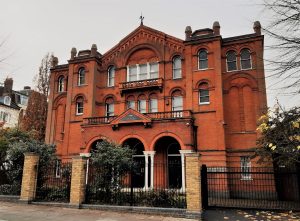
Abbey Road Studios (and Zebra Crossing) – 3 Abbey Road, London NW8
Abbey Road Studios is in a house (or ‘villa’) dating from c1837 which originally consisted of nine bedrooms, servants quarters and a wine cellar. The house was purchased by The Gramophone Company (later EMI) and inaugurated in November 1931 with a recording of ‘Land of Hope and Glory’ by the London Symphony Orchestra, conducted by Sir Edward Elgar. Known as the EMI Studios, the recording studios (Studios 1 and 2) cover the large garden to the rear of the house. In the early days mainly classical music, light entertainment, spoken word and OSTs were recorded here. It has a rich history without the Beatles.
The Beatles recorded almost all of their albums and singles here between 1962 and 1969 using the four-track REDD mixing console designed by Peter K. Burkowitz. Having called their 1969 album ‘Abbey Road’, the studio followed suit and was renamed Abbey Road Studios. Iain Macmillan took the album’s cover photograph outside the studios, with the result that the zebra crossing has since become a place of pilgrimage for Beatles fans. In December 2010 the zebra crossing at Abbey Road was given a Grade II (historic) listed status.
The Beatles recorded mostly in Studio 2: Key dates
- 6 June 1962: demo – Bésame Mucho, Love Me Do, Ask Me Why, PS I Love You. Producer was George Martin.
- 4 September 1962: recorded the 7” single ‘Love Me Do/PS I Love You’.
- 11 February 1963: recorded the album ‘Please Please Me’ in one day.
- October – November 1965: recorded ‘Rubber Soul’.
- Spring – Winter 1966: recorded ‘Revolver’.
- Winter 1966 – 1967: recorded ‘Sgt Pepper’s Lonely Hearts Club Band’.
- 25 June 1967: satellite broadcast of ‘All You Need Is Love’.
- Spring – Summer 1969: recorded ‘Abbey Road’.
- 4 January 1970: final session – ‘Let It Be’ (John absent).
Zebra Crossing cover shot for Abbey Road: Key facts
- Friday 8th August 1969, 11.35am.
- Cover design by Apple Records creative director John Kosh, with input from McCartney.
- Iain Macmillan stood on a stepladder and shot six images in ten minutes with a Hasselblad camera, 50mm wide-angle lens, aperture f22 at 1/500 sec.
- John, Ringo and Paul are wearing Tommy Nutter suits.
- Image No.5 was perfect.
- Paul is wearing sandals in images 1 & 2.
- The white VW Beatle belonged to a resident of the apartment block opposite the studio.
- ‘Abbey Road’ was originally going to be called ‘Everest’.
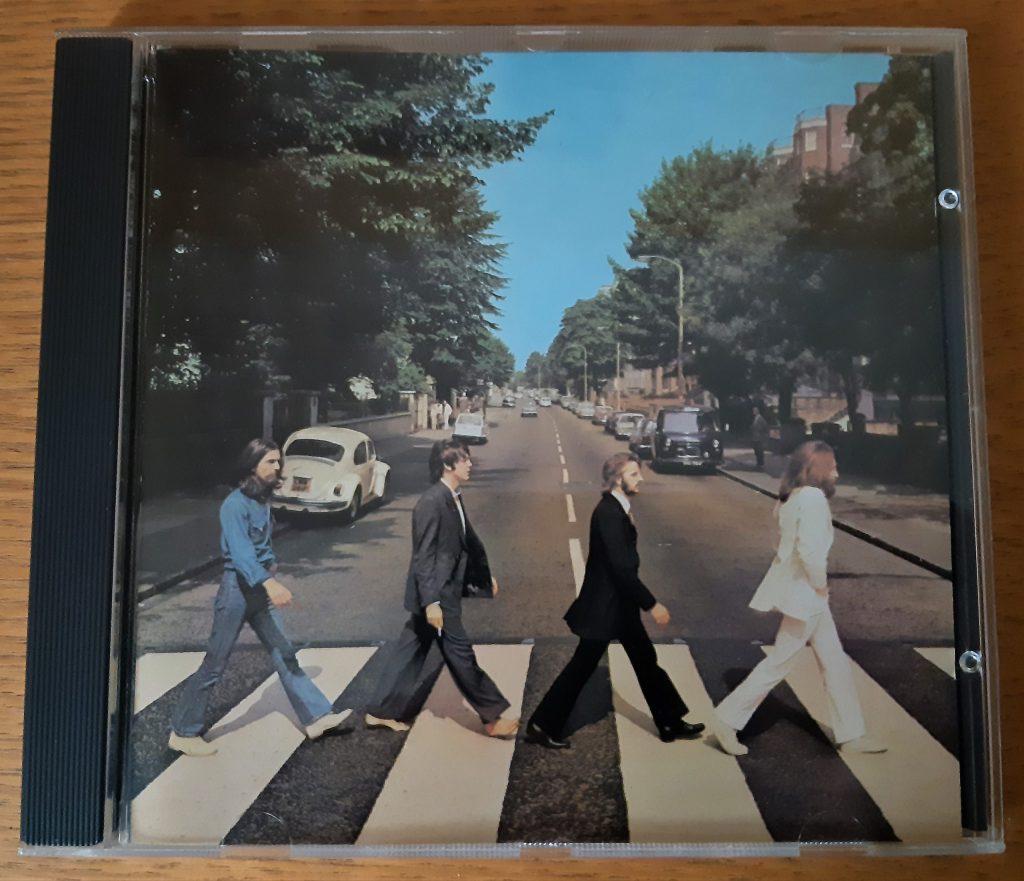
Abbey Road album cover (Abbey Road Studios white wall on the left in front of VW Beatle)
Abbey Road Studios – celebrating Sgt Pepper 50th Anniversary in 2017
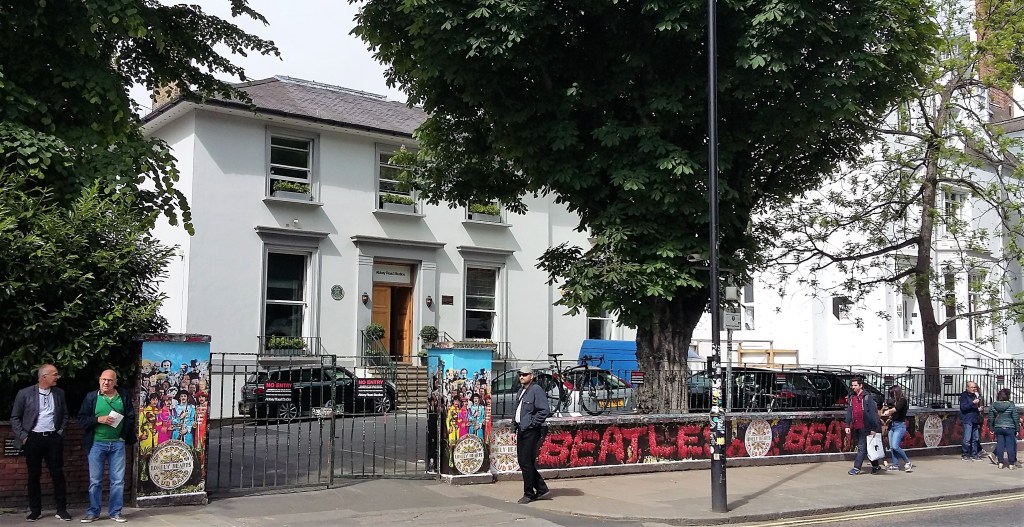
Paul McCartney’s House – ? Cavendish Avenue, London NW8
Paul purchased his house in March 1965 for about £40k. After some building and redecoration (£20k?), including the wall and gate, Paul moved in in August? 1966. I do know the number of the house, which is easy to find elsewhere, but as Paul still lives here I’m going to respect his privacy.
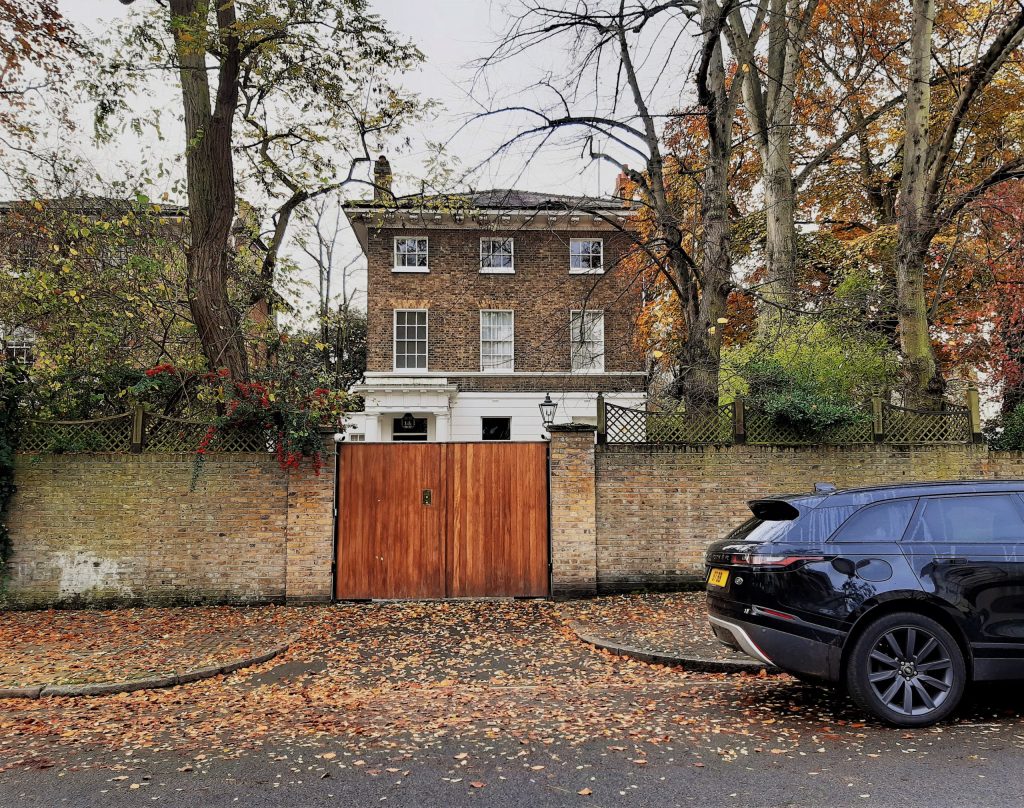
A few Beatles photo sessions took place here which some Beatlesmaniacs will already know:
- 28 July 1968: geodesic dome promo shot by Don McCullin (Paul’s sunhouse, Beatles on the roof).
- Autumn 1968: Paul’s portrait for the White Album by John Kelly.
- April 1969: US cover shot for ‘Ballad of John and Yoko’ 7” single by Linda McCartney (back garden).
| If you would like to experience my Beatles + More Rock’n Roll Tour that’s easy. Choose my private London tour:
Private tours, door-2-door service, pickup and drop-off, 6 people maximum, I explain as we explore. |
